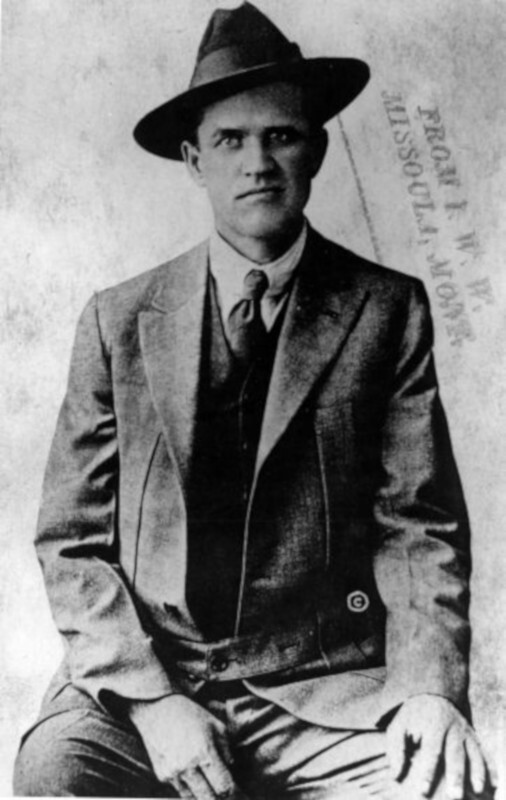
Little's organization, the radical Industrial Workers of the World, sent him to Butte amidst the biggest strike Butte had seen. Two weeks later he would be dead, dragged out of bed and hanged from a railroad trestle.
In 1917, Butte’s miners were fed up. The war had ramped up demand for copper. Mines and smelters were running at full speed. The powerful Anaconda Copper Mining Company was reaping great profits, but workers saw little of that. Moreover, the Company had refused to recognize any miners’ union since 1914. And even earlier than that, it had imposed measures that severely weakened the once powerful Butte Miners Union.
The U.S. entry into war, and the looming prospect of a draft, further inflamed workers. Butte was a city of immigrants, and many of those immigrants had no desire to fight alongside, or against, various countries lining up on one side or another in the Great War.
The final straw was a disastrous mining accident – the worst in the history of hard-rock mining – that snuffed out the lives of 168 men in June of 1917. Immediately afterwards, miners went on a wildcat strike that eventually spread to all the mines. Organizers stood up a new, more radical, miners’ union to advocate for their immediate needs and to serve them going forward. The Anaconda Company, however, would not budge. So the strike dragged on into July.
In mid-July, a man stepped off the train at the Northern Pacific station in Butte and headed uptown. His name was Frank Little. Little was frail and crippled due to a broken ankle. But his power came from his mouth – from his galvanizing speeches.
Little was an organizer for the Industrial Workers of the World (IWW). The IWW was a radical union. It wanted to organize all workers, all over the world, and overthrow the capitalist system. Despite its radicalism, it was not a marginal organization. The IWW had gained a strong following, especially in the American West. Even Butte miners, who had a reputation for conservatism, had growing numbers of IWW members in their ranks.
In Butte, Little connected with the strike’s organizers. He gave impassioned speeches against war and the capitalist class. And he strategized with union leadership on how best to proceed with the strike.
Two weeks into his stay in Butte, however, six masked men raided the boarding house where Little was staying and kidnapped him. They tied him to a car bumper and dragged him through the streets before hanging him to die from a train trestle on the edge of town. A cryptic note was left pinned to him.
Many people suspected the Anaconda Company. But no one was ever arrested, let alone tried and found guilty, for Frank Little’s brutal killing. He quickly became a martyr, both in Butte and nationally. To this day, his gravesite in Butte is visited regularly.
Images

